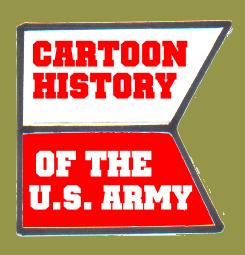
THE LONG MARCH
 ______In 1933 the Chinese Nationalist forces under Chiang Kai-shek launched an offensive on Communist-held safe-havens in Jiangxi and Fujian provinces in South-East China. The aim of the Nationalists was to eliminate the threat posed by the Reds once and for all.
______In 1933 the Chinese Nationalist forces under Chiang Kai-shek launched an offensive on Communist-held safe-havens in Jiangxi and Fujian provinces in South-East China. The aim of the Nationalists was to eliminate the threat posed by the Reds once and for all.
______Soon the Chinese Communists were getting their collective butts kicked. The Nationalists were fighting a war of entrenchment and attrition, ringing the Reds with fortifications and then slowly closing the ring tighter and tighter.
______Something clearly had to be done. Soviet advisors told the Chinese to launch frontal attacks against the fortifications. This turned into a disaster for the Chicoms when they lost great numbers of soldiers and equipment in these attacks. Then the advisors decided their best bet for survival was to abandon Jiangxi and Fujian and take what was left of the Red Army north to Hunan, where the Communist Party was gaining strength. The Long March began in October 1934.
 ______87,000 soldiers started out on the March. 45,000 of them were killed during the Battle of Xiang less than two months into the trek, marking the last time the Chicoms unconditionally listened to their Soviet advisors.
______87,000 soldiers started out on the March. 45,000 of them were killed during the Battle of Xiang less than two months into the trek, marking the last time the Chicoms unconditionally listened to their Soviet advisors.
______Mao, formerly in disgrace because he disagreed with the advisors now came forward to lead the Long March. Instead of moving along a straight line to their objective the Reds moved in unpredictable ways, along routes that did not make much sense. Mao also decided to make for Shaanxi Province, much further away.
 ______The Reds carried everything with them: printing presses, typewriters, medical supplies and records. During their 5,500 mile-long trip they encountered incredible terrain: mountains, deserts, raging rivers, marshes and forests. Their enemies were not just the Nationalists but also local warlords who were themselves too powerful for the Nationalists to take on.
______The Reds carried everything with them: printing presses, typewriters, medical supplies and records. During their 5,500 mile-long trip they encountered incredible terrain: mountains, deserts, raging rivers, marshes and forests. Their enemies were not just the Nationalists but also local warlords who were themselves too powerful for the Nationalists to take on.
______In October 1935 some 10,000 members of the Chinese Red Army made it to Yanan, all that survived of Mao's original 87,000. However, these 10,000 hardy veterans would form the core of the Chinese Communist Party and the People's Liberation Army. The Long March had another effect on history, one that would not be seen for some years: the new Red strongholds were in a better position to fight the hated Japanese invaders and the Allies would be pursuaded during World War II to provide them with weapons and equipment and to give them breathing space against the Nationalists. This insured Mao's survival and would lead to the Communist takeover of China in 1949.
WHERE WAS CAESER'S LOST BATTLE?







 ______In 1933 the Chinese Nationalist forces under Chiang Kai-shek launched an offensive on Communist-held safe-havens in Jiangxi and Fujian provinces in South-East China. The aim of the Nationalists was to eliminate the threat posed by the Reds once and for all.
______In 1933 the Chinese Nationalist forces under Chiang Kai-shek launched an offensive on Communist-held safe-havens in Jiangxi and Fujian provinces in South-East China. The aim of the Nationalists was to eliminate the threat posed by the Reds once and for all. ______87,000 soldiers started out on the March. 45,000 of them were killed during the Battle of Xiang less than two months into the trek, marking the last time the Chicoms unconditionally listened to their Soviet advisors.
______87,000 soldiers started out on the March. 45,000 of them were killed during the Battle of Xiang less than two months into the trek, marking the last time the Chicoms unconditionally listened to their Soviet advisors. ______The Reds carried everything with them: printing presses, typewriters, medical supplies and records. During their 5,500 mile-long trip they encountered incredible terrain: mountains, deserts, raging rivers, marshes and forests. Their enemies were not just the Nationalists but also local warlords who were themselves too powerful for the Nationalists to take on.
______The Reds carried everything with them: printing presses, typewriters, medical supplies and records. During their 5,500 mile-long trip they encountered incredible terrain: mountains, deserts, raging rivers, marshes and forests. Their enemies were not just the Nationalists but also local warlords who were themselves too powerful for the Nationalists to take on.